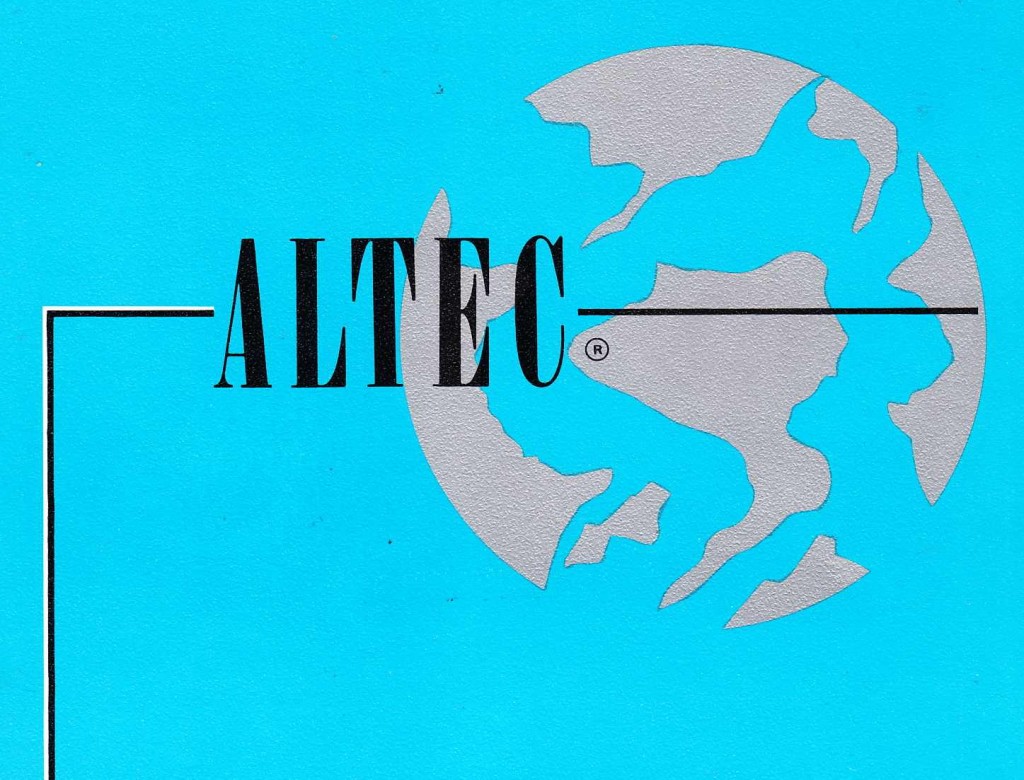 Download the sixteen-page 1968 Altec Sound And Communication catalog:
Download the sixteen-page 1968 Altec Sound And Communication catalog:
DOWNLOAD:AltecFullLine1968
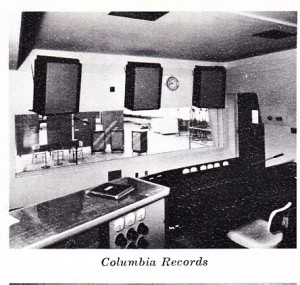 Products covered, with text photos, and limited specs, include the full range of microphones, horn speakers, Duplex coaxial speakers, full range drivers, voice-of-the-theatre systems, tube and solid-state power amps, pre-amps, compressors, and mixers; the full range of plug-in transformers, 9200 console and attendant components; a page devoted o the ‘Giant Voice’ public warning system (see earlier post); plus the range of telephone audio equipment and intercom systems for industry and hospitals.
Products covered, with text photos, and limited specs, include the full range of microphones, horn speakers, Duplex coaxial speakers, full range drivers, voice-of-the-theatre systems, tube and solid-state power amps, pre-amps, compressors, and mixers; the full range of plug-in transformers, 9200 console and attendant components; a page devoted o the ‘Giant Voice’ public warning system (see earlier post); plus the range of telephone audio equipment and intercom systems for industry and hospitals.
If you are not familiar with Altec’s classic pieces, this brief catalog is a great place to start. Altec’s market-leadership would soon be supplanted by a range of innovations introduced by smaller companies in the 1970s, but at the time, this was still top-end gear. Much of this equipment is still used today; if not in recording studios, then by audiophiles. Dig in.
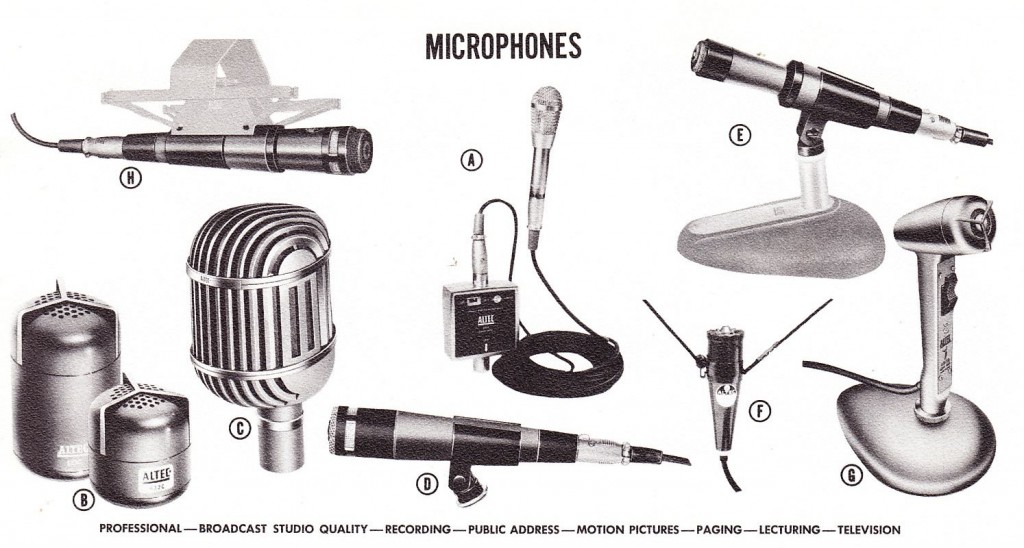
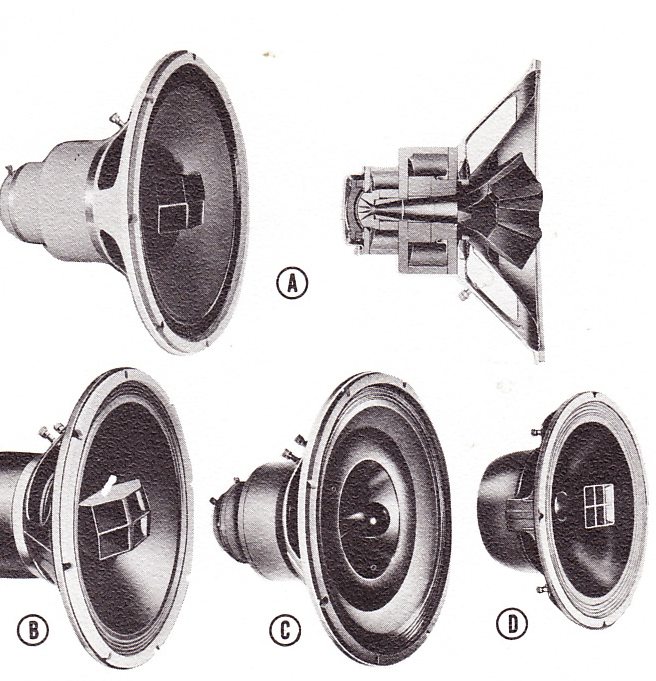
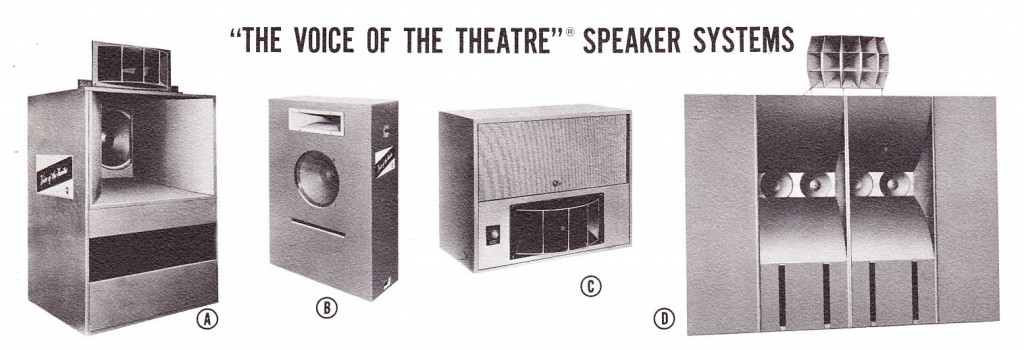
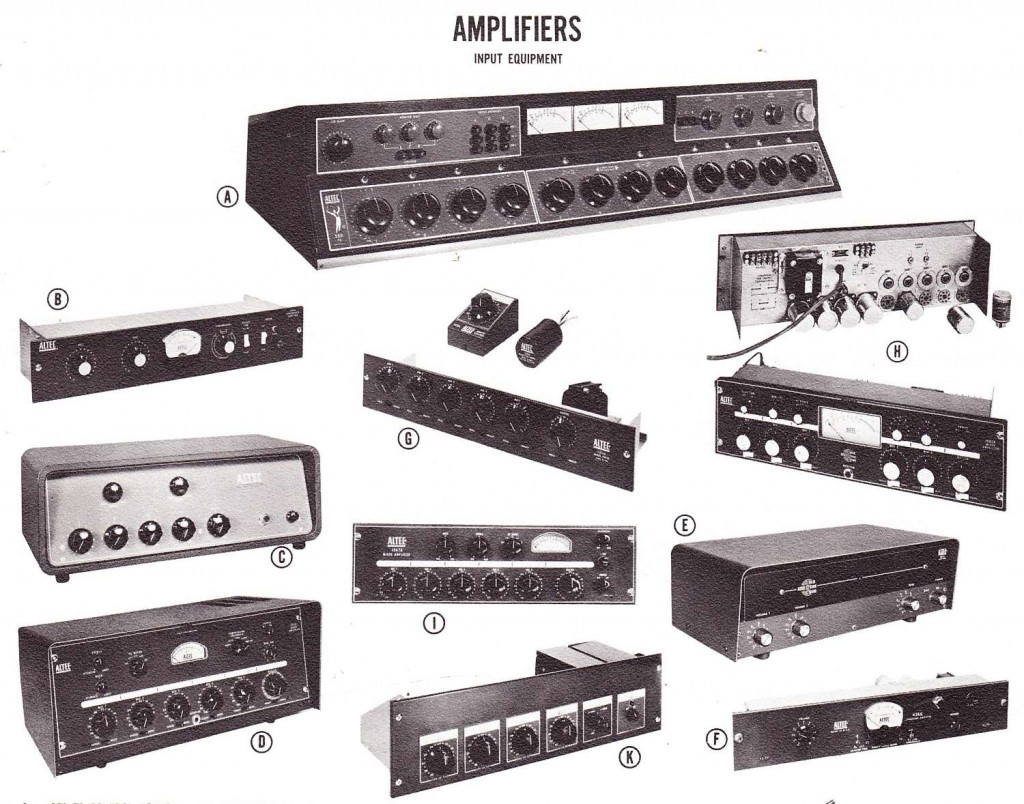
5 replies on “Altec Sound Equipment 1968”
Hi Chris,
Love your reviews of the old and “repurposed” stuff of yore….Does THIS article ever bring back the memories! I had the good fortune of being in a couple of among the zillions of garage bands from the early-later ’70’s that tugged and lugged the stalwart Voice of the Theatres across the land in the backs of trucks, vans, and U Hauls. These were the “we mean to do a little business” PA components of the day for playing school gyms, outdoor “keggers”, and insane basement frat parties. It seems that many of us didn’t do these things justice simply because we underpowered them. Amplification – particularly brute amplification – was quite expensive in that era (as you pointed out so well in your Marshall article). A very common problem in that era was simply too much instrument amplification coming from such amps as Fender Twins (heck even guitar through a Bassman or Ampeg V4 with a fuzz unit) and 200 watts of bass coming through an Acoustic folded horn, for example. On the other hand, as many of our contemporaries did, we “made do” with the typical Sunn Concert Controller 100W PA, with it’s pair of 4×12″ wedge columns. So we’d go out and splurge on a used pair of big ol’ “Voices”, consign the Sunn wedges as our “monitors”, and still no one could hear the vocals. We then got the bright idea of going up to the local music store to beg and plead to borrow the used Sunn “Coliseum Slave” we always swore we were going to purchase, but never could afford. All in all, we ended up totally worn out by the time we had all this tons of stuff loaded, unloaded, set up, played the sets, loaded back up, and then unloaded back home. Lord forbid if anyone happened to drop one of the raw, uncabineted horns that set on top of the “Voices”, as it meant going out and plunking out $60 on ’70’s dollars for a stinkin’ new diaphram…sheesh!! This was livin’ in those days, and at made us work for our youthful “fun” and screeching deaf-eared egos! Thanks for the memories -Eric
Just stumbled on this site today. What a wonderful trip down memory lane!
We still have and use M-49/51 mics and 681, 689s (not much call for the 681/689 except as props) (p.3 of the catalog). I’d be happy to hear from anyone who has or knows where to acquire any more 192A windscreens (catalog p.4).
A comment on Eric’s thoughts – more power would not necessarily have helped his A-7s cut through. As the catalog mentions, they are rated for 30 watts. A 40 watt 128b amplifier is about all they want. We have 4 A7-500s and one A7 (800) The 500s may take a little more power. But I find that with a Dynaco 120 60 watts/ch), I am getting nothing more from the A7s.
The A7 is a vented design, but before the science of bass reflex technology was fully understood. So they were, as the add says, best for small venues. The A1, with its huge box and multiple drivers was what was really needed, even to fill a quiet movie theater.
The A7-500, with the 500 Hz cross over, was originally intended (so I have heard) as a studio monitor. But they ended up behind a lot of screens in small theaters (often with two HF horns stacked up on top, instead of the normal one).
hi. i dont suppose any of these types of microphones were used by the rolling stones in 1968 to record symapthy for the devil were they and what are they called. i need to know for a college assignment. if you could help that would be great. 🙂
and by the way the microphones used at woodstock were the shure 565 modified with a xlr plug and the mixing console was a stack m68s and one altec eq . the amplifers were not crowns as often told they were modifed rca 600 watt military monoblocks and terry hanley even took the cover off the backs of the altec drivers to prevent from cooking the diaphrams
I’m an audio technician for Zellerbach Hall at UC-Berkeley, which when it was new in 1968 had a large Altec sound system built into the walls. (There are remnants of the old stuff still around, but the old A7s and 1594 power amps were consigned to the “Excess and Salvage” department a few years ago.) Speakers were installed in the ceiling about 20 ft in front of the proscenium, at left, center and right, angled at about a 30 degrees to cover the whole room: A single A7 on each side and two A5s in the center, all controlled by a customized Altec 250 console with a 9062A EQ on each of the three output channels (mixer and EQs also disposed of about ten years ago.) However, the system designers were clever enough to install two SpectraSonics compressors instead of Altecs!
All the amplifiers were racked up in the control room, with a speaker patch bay to assign the power outputs to speakers (which meant the signals were traveling through about 200 feet of 12 gauge speaker wire run through the walls.) That was the state-of-the-art in the late 60s!
And there were racks of octal transformer can frames to match the mic signals to the mixer inputs (updated to JBL equivalents in the 70s, and the old Altec cans were used for custom made DI boxes.) All the mics were Shure “Unidynes” except for a pair of AKG C451s with an outboard power supply – which we still have (they were sent to AKG to be refurbed a few years ago.) And the EV dynamic shotgun mics mounted in the ceiling for room monitoring are still there and still working after nearly 50 years!
Oh, and the Crown reel-to-reel decks for playback and recording (upgraded to Otari MX5050s in the 80s, replaced with DAT machines in the late 90s, then to CD recorders, now we simply run ProTools off the Avid console…)
And in those days, those room mics were how you monitored your mix! The control room was sealed behind glass, next to the lighting control booth. Four monitor speakers were (and still are) mounted above the glass window, labelled “right”, “center”, “left” and “monitor”. The first three were connected to the mixer outputs, and the “monitor” speaker was fed by the ceiling mics. That was the only way the operator could hear what was happening out in the hall!
The booth is still there, but, of course, we mix from the main floor now. I wonder what the engineers who built the system in 1968 would think of the Avid SC48 and Meyer line arrays we have now?